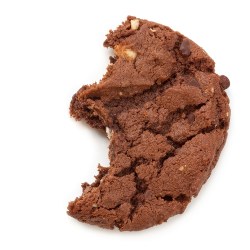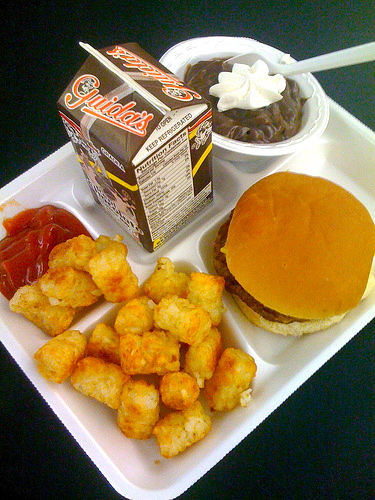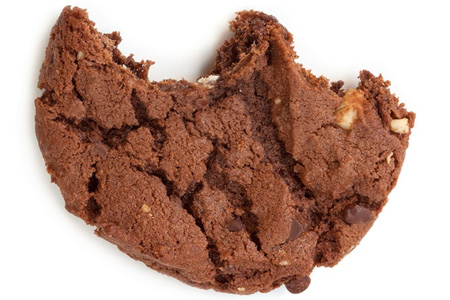
Americans waste about half our food. (Photo by Robyn Mackenzie/Shutterstock.)
Imagine leaving the grocery store with three bags filled to the brim with your favorite foods. As you walk through the parking lot, one slips out of your hand. You look at it, shrug, and just keep walking.
Seems ridiculous, right? But that is essentially what is occurring throughout our food system. And in a time of drought and skyrocketing food prices, we simply can’t afford to be this inefficient.
People all around the world are investing time, land, water, energy, and loads of other resources to grow, store, process, and transport food, only for nearly half of that food to be thrown away. Those potatoes on a breakfast platter get shrugged at because of a low-carb diet. The cheese, for which the kid screamed bloody murder, only gets one bite before that kid is off to play again. The chips remain at the bottom of the nacho plate, because who can really eat that many chips?
In the United States today, about 40 percent of all food goes uneaten. Each year Americans are throwing away the equivalent of $165 billion in uneaten food, making food the single largest component of solid waste in our landfills. This costs the average family of four between $1,350 and $2,275 annually.
Yesterday, Natural Resources Defense Council released a report and kicked off a food waste blog series investigating the causes and extent of our food losses at every level of the supply chain, and how to get the most out of our food system through smart efficiency solutions.
But it’s not as straightforward as the potatoes left on your plate. Food is lost all along the supply chain — on farms, during processing and distribution, in retail stores and restaurants, and in our homes. The reasons for these losses vary. At the farm level, crops can be left on the field because the price at the time of harvest is too low for farmers to recuperate even the costs of labor to harvest. Inventory can be left over at distribution centers. Retail stores often overbuy produce in the hopes that creating the illusion of abundance in food displays will sell more. With offerings that are two to eight times government recommended serving sizes, large portions and extensive menus can lead to food loss in restaurants. And then there are consumers at the end of the supply chain. You and me, tossing half a sandwich simply because we don’t feel like carrying it home.
As I’ve mentioned in previous blogs, the resources consumed to grow food that is never eaten take a staggering toll on the environment, including a full 25 percent of freshwater consumption, 4 percent of oil, and about 23 percent of all U.S. methane production once food scraps arrive at the landfill. Yes, landfill. Only about 3 percent of food scraps in the U.S. are composted.
The good news is, it doesn’t have to be this way. We can do much better.
In fact, we didn’t used to be this wasteful. Today, we’re discarding 50 percent more food in the U.S. than we did in the 1970s. Like with energy, while we may never get to perfect efficiency, there are many promising ways to improve upon the current state of affairs.
For example, the $16 billion grocery chain Stop and Shop/Giant Landover was able to save an estimated annual $100 million by conducting a thorough analysis of freshness, product loss, and customer purchases in their perishables. They found whole stock-keeping units that weren’t necessary. They also redesigned their displays to no longer be overfilled so that less product spoiled on the shelf (thus requiring less staff handling to sort out the damaged items). As a direct result of increasing operations efficiency, in addition to saving loads of money, customer satisfaction rose because the chain’s produce was on average three days fresher than before.
Dining services at the University of California-Berkeley campus reduced food waste in their kitchen by 43 percent using a software product that helps track food waste. This amounted to savings of more than 1,000 pounds of food and $1,600 per week.
It’s not just businesses. Avoidable household food waste in the United Kingdom has decreased by 18 percent over five years, in part due to the successful public awareness campaign Love Food Hate Waste.
We all have a role to play in reducing our waste tallies, and it’s time to get moving. See our new report for steps that people in business, government, and households can take to start addressing the problem. The report includes more efficiency ideas, success stories, and explanations of what is causing so much food to go to waste. You can also find quick tips on helping to reduce food waste in this fact sheet [PDF]. And as you go about your three meals a day, keep in mind that no matter how sustainably our food is farmed, if it’s not being eaten, it wasn’t a good use of resources.




